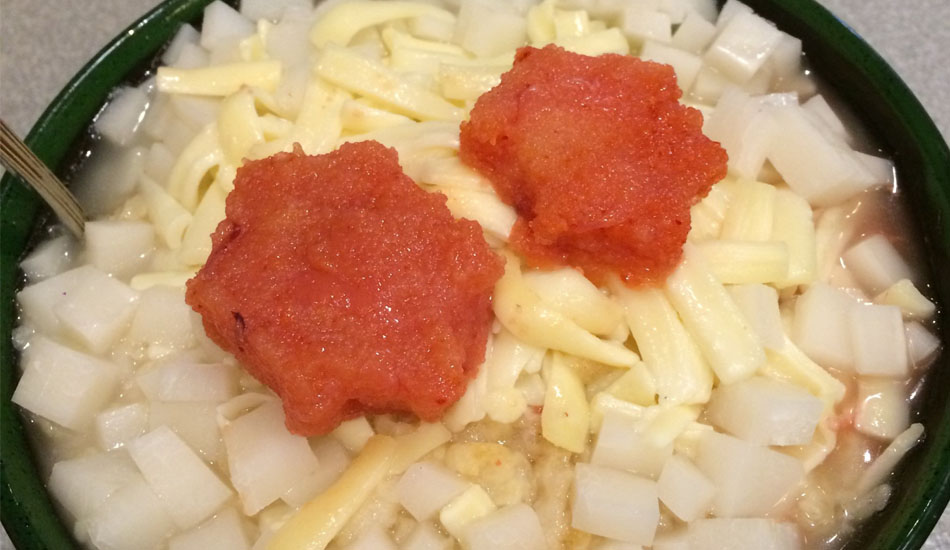Creative Monja at Monjayaki Turtle in Kameido
Published: September 22, 2017
Monjayaki is a Tokyo original. Simply put, it’s a kind of savoury pancake cooked on a hotplate set into the table. There is a lot more to this tasty treat than that, of course. Let Mr. Yoshio Arimoto, ebullient proprietor of Monjayaki Turtle in Kameido, be your guide to this downtown delight.
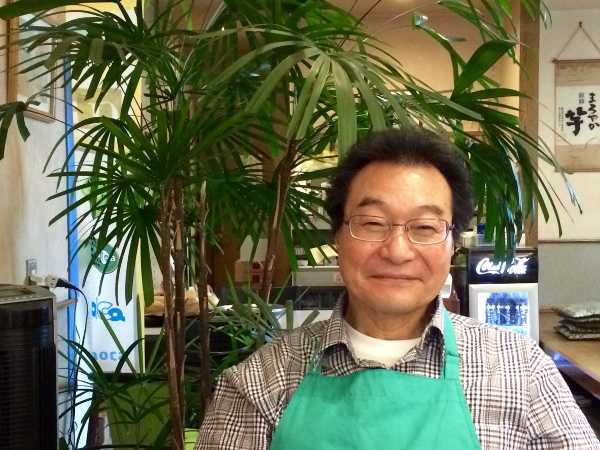
“My wife and I have been running the restaurant here for 22 years now. Before that, I worked in the automotive business for many years but fancied a change. I managed to find a monja chef in Hino, west Tokyo, who showed me the ropes and we were soon up and running. Monja is fantastic food; it’s delicious, reasonably priced and sociable. You make it yourself, which creates a great topic for discussion. People of all ages like monja and our customer range reflects that; families, business people, high school groups, sports clubs and the like. Young people can have a good time together and it won’t break the bank,” he says.
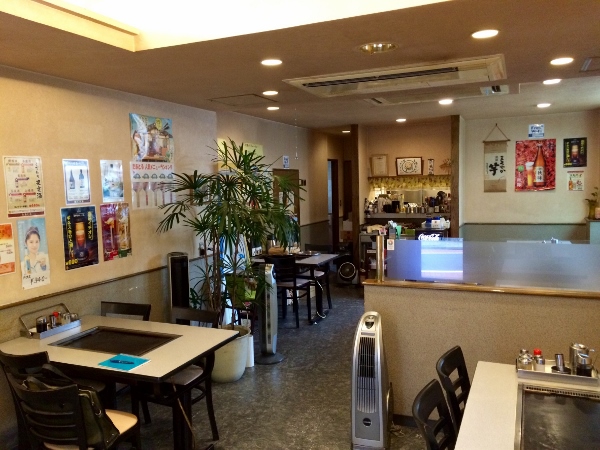
The basic ingredients of monja vary little: soft flour (hakurikiko in Japanese), low in protein and commonly used for cakes and biscuits, is mixed with a broth (dashi) to form a runny batter. The broth is the key and the exact recipe is a closely-guarded secret for many monja makers. Mr. Arimoto vouchsafed only that his broth contained mirin, bonito and sugar amongst several other ingredients. Shredded cabbage and chopped yam are then added to the mix. Monja Turtle uses a variety of yam known as Kyoto Tsukune imo, which is harder and contains less water than other varieties.

The toppings are added to a bowl of the batter mix and brought to the table. The most popular combination is the Turtle, which features pollock roe (mentaiko), cheese and chopped pounded rice cake (mochi). It goes down well with beer.

In second place is the Tomato, which contains a large, bright red tomato, pork, octopus, short-necked clams, squid and onion. Healthy!
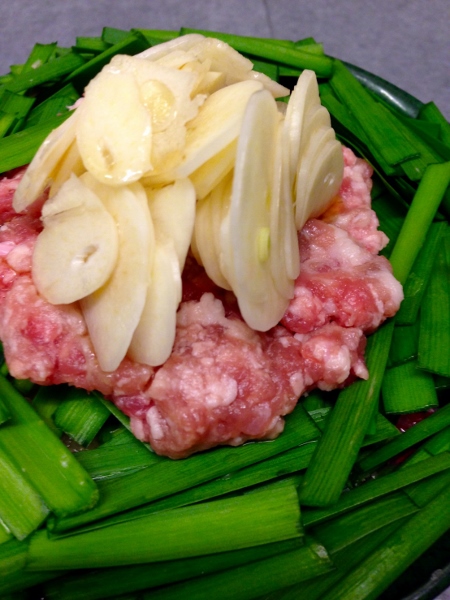
In the bronze medal position is the Gyoza (potstickers) monja, full of pork, garlic and garlic chives (nira). Chili oil (rayu) is added after cooking. Just like real gyoza, this one goes well with cold beer.
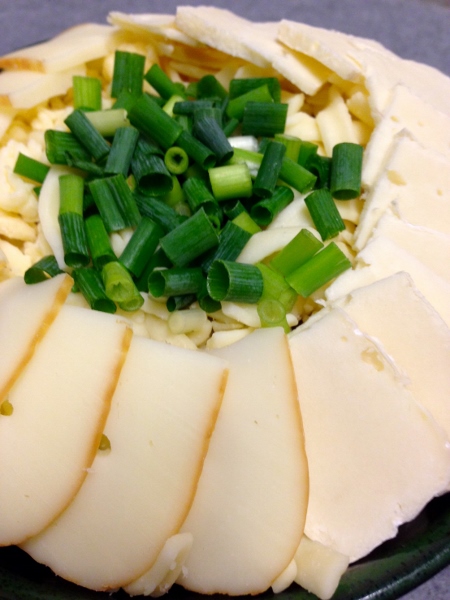
The Cheese Quartet contains four varieties of cheese: Camembert, Mozzarella, Gouda and Scamorza.
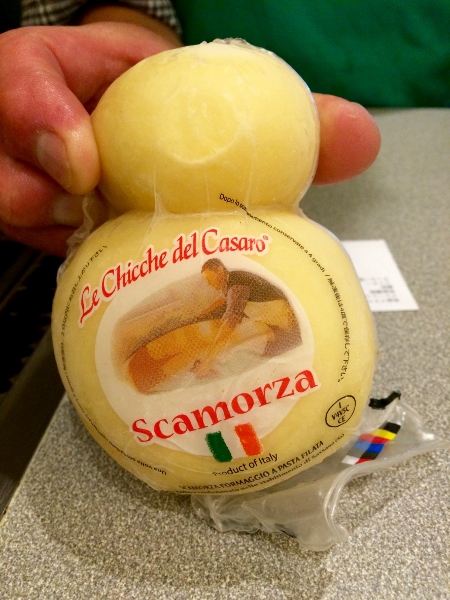
Scamorza is an Italian cow’s milk cheese from the Southern regions of Apulia and Calabria.
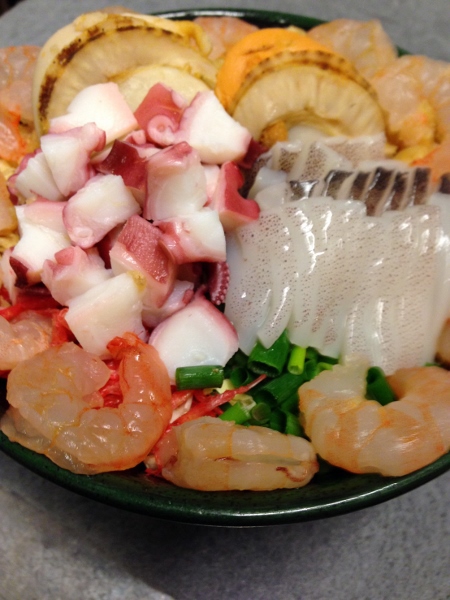
The Kaisen (seafood) monja features scallops, octopus, shrimp and squid.

Customers don’t have to stick to the monja sets either, and can order as they like from a wide variety of ingredients.
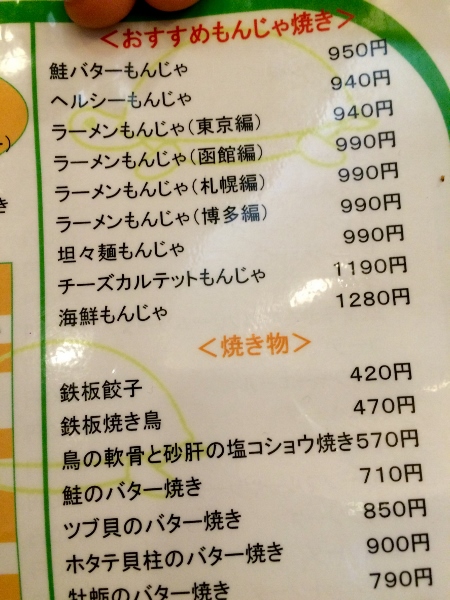
There’s also a whole range of ramen monja, featuring the flavours of various regional noodle dishes.
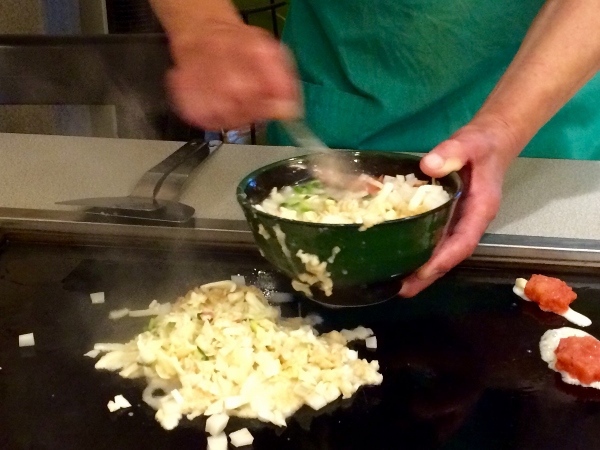
Mrs. Arimoto brought a bowl of the top-selling Turtle mix while her husband fired up a hotplate. The hotplates are 9mm thick and heat up quickly. Mr. Arimoto splashed a little canola cooking oil onto its surface and then got to work with the metal spatulas.

The roe and some of the cheese were placed in a corner of the hotplate while the solid ingredients were cooked at the centre.

Mr. Arimoto’s hands were a blur as he chopped and chivvied the mixture.

As it cooked, he created the signature lagoon shape…

Before adding some Japanese-style Worcester sauce to the remaining batter mix and pouring it into the centre of the lagoon, taking care not to breach the walls.
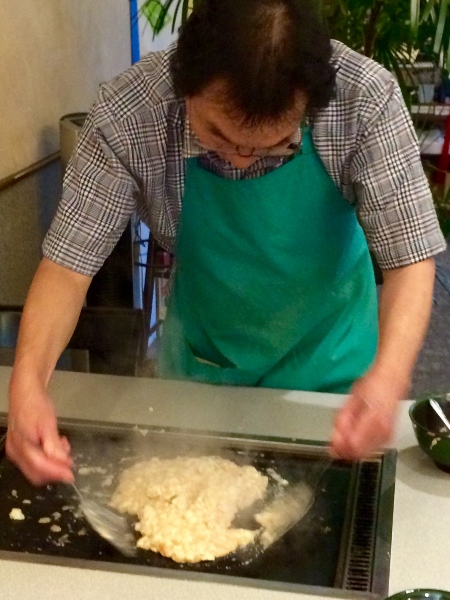
As the batter mix began to bubble, he deftly added the roe and cheese, which was now also bubbling away, and embarked on another frenzy of chopping, scraping and mixing. “You have to wait until it begins to change colour around the outer edge and then mix it all together,” he said.
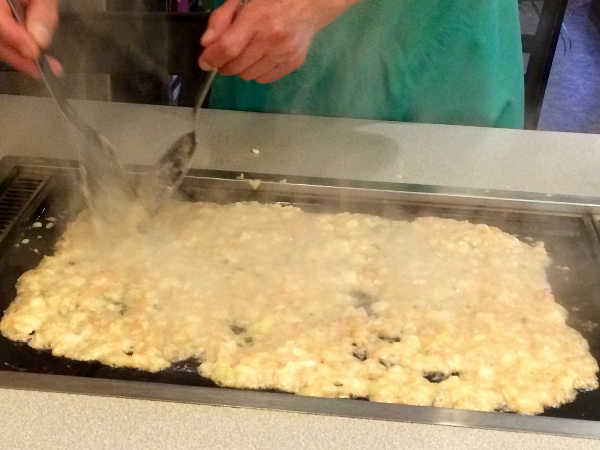
With a final flourish, he spread the monja out to cover the hotplate and turned down the heat. Voila! Time to grab the small spatulas, called hera in Japanese, and dig in.
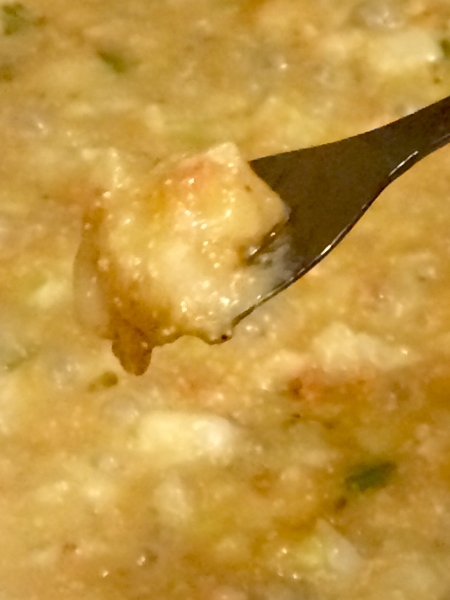
“You can eat monja in three different consistencies as it cooks. First it’s very runny, then it thickens up and finally it becomes really crispy and crunchy. This is why cheese works so well in monja,” he said.
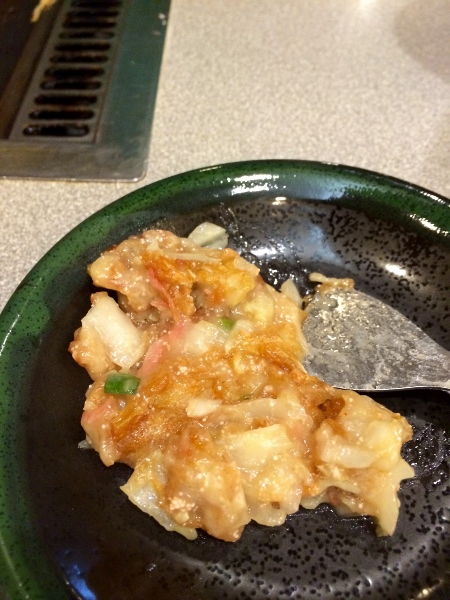
It’s delicious. The initial runny consistency belies the rich savory flavour of the ingredients and the broth, while the piquancy of the salty and spicy roe mixed with the creamy cheese adds a tremendous aftertaste. The monja cooks slowly, giving customers time to eat, drink and talk.
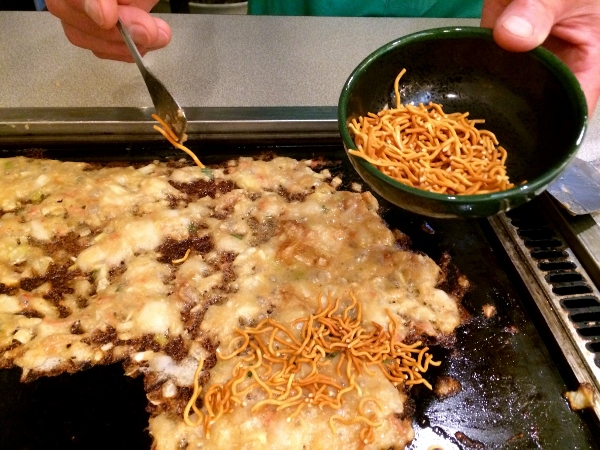
But that’s not all. To raise the crispy factor to a whole new level, Mr. Arimoto adds some of the popular snack noodle “Baby Star” to the mix. It’s a crunchy, savoury, cheesy extravaganza!
The monja is surprisingly filling and it’s great fun scraping away at the hot plate, turning the monja over and cooking it yourself.
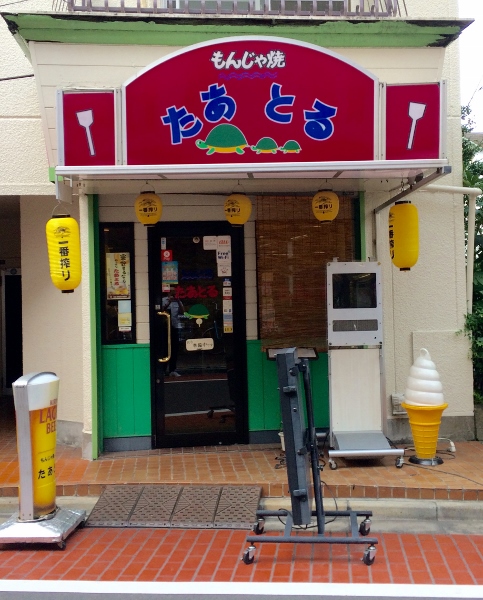
The Arimotos are welcoming hosts, the monja is fantastic and it’s very reasonably priced. If you want to try the traditional flavour of Tokyo’s favourite, then Monjayaki Turtle in Kameido is the place to go!
Story and Photos by Stephen Spencer

